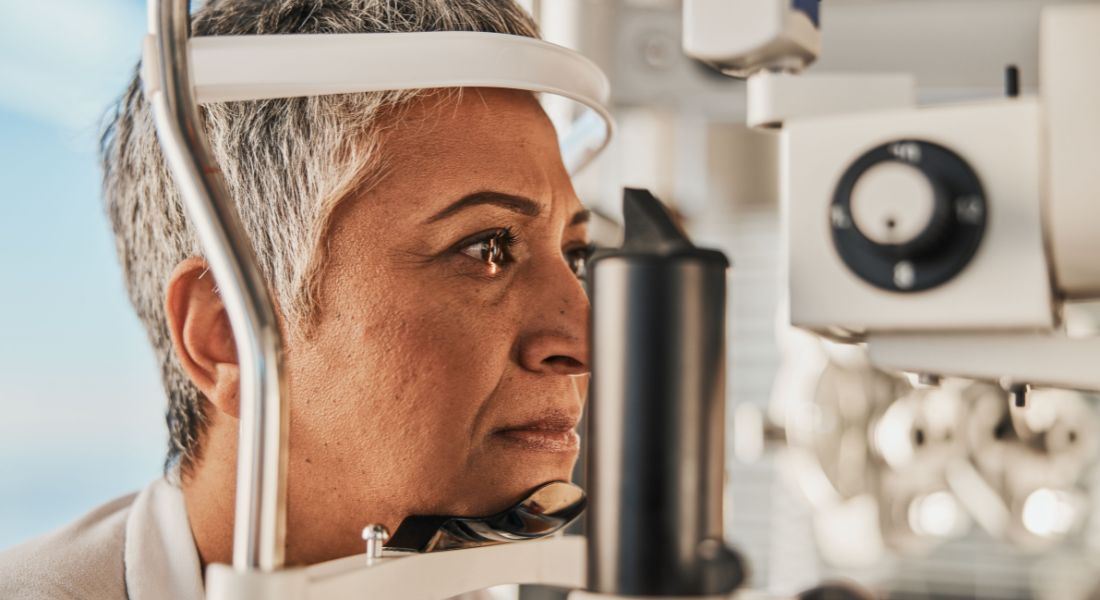Can You Fix Thin Corneas Before LASIK Surgery?

If you’ve ever dreamed of getting rid of your glasses or contact lenses, being told that your corneas are “too thin for LASIK” can feel deeply disappointing. It’s one of those moments where you think your vision goals have slipped out of reach. You might even feel confused or frustrated, especially if you’ve never had any issues with your eyes before. Many people assume that LASIK is suitable for almost everyone, so discovering that your corneal thickness plays such a major role can come as a surprise.
Naturally, the next question you might ask is: “Can I strengthen or thicken my corneas so I can become eligible for LASIK later?” It’s a completely understandable thought. After all, if you can improve your skin, hair, bones, or muscles with the right treatments, surely there must be a way to boost your corneal strength too… right?
Well, the reality is a little more complex.
In this article, I’m going to walk you through everything you need to know about thin corneas, whether they can be “fixed,” the role of corneal cross-linking, and what your best alternatives are if LASIK isn’t safe for you. I’ll keep the conversation honest, clear, and focused entirely on helping you understand what’s possible based on real clinical evidence. By the end of this guide, you’ll know exactly where you stand not just in terms of LASIK eligibility, but in understanding your corneal health and the vision-correction options open to you.
Let’s start by looking at why corneal thickness matters so much.
Why Corneal Thickness Matters for LASIK
LASIK works by reshaping the cornea using a laser. To correct your vision, the surgeon removes tiny layers of corneal tissue to adjust its curvature. This reshaping changes the way light enters your eye, allowing it to focus properly on the retina.
But here’s the key point:
LASIK removes corneal tissue so you need to start with enough corneal thickness to remain structurally safe.
If your corneas are too thin, LASIK may leave them weakened or unstable, which increases the risk of complications such as:
- corneal ectasia (progressive bulging of the cornea)
- poor visual outcomes
- unstable vision
- long-term corneal deformation
This is why clinicians take corneal thickness extremely seriously. It’s one of the biggest determining factors in LASIK eligibility.
What Is Considered a “Thin” Cornea?

A normal cornea is usually 520–550 microns thick in the centre.
LASIK standards vary slightly based on the clinic, but generally:
- Below 500 microns → borderline thin
- Below 480 microns → considered too thin for LASIK
- Below 460 microns → LASIK is almost always ruled out
- Below 450 microns → alternative procedures are required
You may still be eligible for PRK or SMILE depending on other factors, but standard LASIK is unlikely. It’s important to understand that thin corneas are not a disease. Some people are simply born with thinner corneas. Others may have thinning due to contact lens use, genetics, or undiagnosed keratoconus.
The goal is not to judge the thickness but to understand what your eye can safely tolerate.
Can You Actually Thicken Your Corneas?
This is the burning question for most people: “If my corneas are too thin, can I make them thicker?”
The honest answer is:
– No, you cannot naturally thicken your corneas.
– But you can strengthen them in certain situations.
Corneas cannot regenerate thickness in the way muscle or skin can. Once your corneal tissue reaches a certain thickness, you cannot add more natural tissue on top. However, you can improve corneal stability and structural integrity in some cases. This is where corneal cross-linking becomes relevant.
Let’s break it down properly.
Understanding Corneal Cross-Linking (CXL): Can It Help You Become Eligible for LASIK?
Corneal cross-linking is a technique used to strengthen a weakened or thinning cornea. It’s usually performed to treat keratoconus or corneal ectasia, conditions where the cornea becomes progressively softer and more irregular.
Does cross-linking thicken the cornea?
No, it doesn’t thicken the cornea in the sense of adding tissue. But it can strengthen the cornea by creating new bonds within the collagen fibres.
Does cross-linking allow you to get LASIK afterwards?
Usually no, and here’s why:
- CXL strengthens the cornea but doesn’t add thickness.
- LASIK still requires removing tissue.
- Operating on a previously weakened or irregular cornea is risky.
- Many surgeons consider LASIK after CXL unsafe.
So what’s the purpose of cross-linking?
To stabilise the cornea not to prepare it for LASIK.
CXL is a medical treatment for corneal disease, not a LASIK-prep method.
However, CXL may open doors to other types of vision correction, such as PRK or implantable lenses, which I’ll explain later.
If Cross-Linking Doesn’t Make LASIK Possible, Why Do People Think It Does?

This misunderstanding usually comes from articles online that oversimplify the effects of cross-linking.
Cross-linking can:
- reduce corneal steepening
- halt progression of keratoconus
- make the cornea stronger
- improve contact lens tolerance
- reduce vision blur caused by irregularities
But it cannot replace corneal thickness that LASIK requires.
Surgeons must protect the long-term structural health of your eyes. The last thing they want is to compromise the integrity of an already delicate cornea by removing more tissue.
What About Other Corneal Strengthening Treatments?
There are a few experimental or less common techniques that people sometimes ask about.
Let’s review them honestly.
Corneal Inserts (Intacs and Similar Devices)
These are tiny arc-shaped implants inserted under the cornea to flatten steep areas. They are used mostly in keratoconus.
Do they increase thickness?
– No they reshape but do not thicken.
Do they make LASIK possible later?
– Almost always no.
Corneal Transplants (Full or Partial)
This is usually reserved for:
- severe keratoconus
- very thin or scarred corneas
- advanced corneal disease
It is not performed to make someone eligible for LASIK.
Artificial Corneal Additions (Hydrogel or Biomechanical Inserts)
These are experimental and not approved for preparing a cornea for LASIK.
Strengthening Drops or Topical Products
These do not exist. No drops can thicken or strengthen the cornea enough to change LASIK eligibility.
So, What Can You Actually Do if You Have Thin Corneas?
Thankfully, having thin corneas does not mean your dream of vision correction is over.
You simply need to consider alternatives that are safe, effective, and suitable for your corneal structure.
Here are the top options.
SAFER ALTERNATIVES TO LASIK FOR THIN CORNEAS
PRK (Photorefractive Keratectomy)
This is often the best alternative for people with thin corneas.
Why?
Because unlike LASIK, PRK does not require creating a corneal flap.
This means:
- less tissue removal
- a thicker residual stromal bed
- lower risk of ectasia
- safer for thin corneas
PRK reshapes the cornea on the surface, keeping structural integrity stronger overall.
Advantages:
- safer for thin corneas
- excellent long-term results
- suitable for many prescriptions
- lower risk of flap-related complications
- used by military pilots and astronauts
Disadvantages:
- longer healing time
- more discomfort for the first few days
- slower return to full clarity
But once healed, visual quality is comparable to LASIK.
PRK is the top recommendation for many people who are told they’re “too thin for LASIK.”
SMILE Laser Eye Surgery
SMILE uses a tiny keyhole incision instead of a full flap. It removes a lenticule of tissue inside the cornea.
Is SMILE suitable for thin corneas?
Sometimes but not always. SMILE still removes tissue, and the calculations require adequate corneal thickness.
Suitable for:
- mild to moderate myopia
- people who want a flapless approach
- some individuals with borderline corneal thickness
Not suitable for:
- very thin corneas
- high prescriptions needing deep lenticule extraction
SMILE is safer than LASIK for some patients but not a universal solution.
Implantable Collamer Lenses (ICL)
ICL is one of the best solutions for people with thin corneas who want:
- crisp, high-definition vision
- no tissue removal
- a reversible treatment
- a solution for high prescriptions
ICL involves placing a biocompatible lens inside the eye, behind the pupil.
Why it’s ideal for thin corneas:
- it doesn’t reshape or remove corneal tissue
- corneal thickness becomes irrelevant
- excellent option for keratoconus patients
- safe for high myopia
- retains corneal strength
Many people with thin corneas who cannot have LASIK get outstanding results with ICL.
Contact Lenses or Glasses (If You Prefer Non-Surgical Options)
Although not surgical, modern contact lenses such as daily disposables or specialist lenses can give excellent clarity. This is also a good choice if your corneal thickness is borderline and your surgeon advises caution.
Does Corneal Thickness Ever Change Naturally Over Time?
This is another common question.
The short answer is:
No, your corneal thickness does not increase naturally after adolescence. Minor fluctuations happen due to hydration or eye rubbing, but these changes are temporary and do not affect LASIK eligibility.
If your corneas are thin in your twenties, they will remain thin throughout life.
Can Lifestyle Habits Strengthen or Protect Your Corneas?
You cannot thicken your corneas, but you can prevent further weakening.
Here’s what helps:
Minimise eye rubbing: This is one of the leading preventable causes of corneal weakening and keratoconus progression.
Avoid sleeping on your face: Pressure on the eyes at night can worsen thinning.
Manage allergies: Rubbing from itchy eyes increases risk.
Use preservative-free lubricating drops if dry: Healthy corneal cells recover better from environmental stress.
Take breaks from contact lenses: Overuse can stress the corneal structure.
These behaviours won’t make you a LASIK candidate, but they help maintain corneal stability.
What About “Partial LASIK” or Customized LASIK Settings for Thin Corneas?
Some clinics promote newer LASIK techniques like:
- tissue-saving LASIK
- thin-flap LASIK
- customised ablations
These approaches remove less tissue but are still not recommended for genuinely thin corneas. Even reduced removal can leave the cornea unstable.
High-quality surgeons prioritise long-term eye health over short-term convenience.
If they say LASIK isn’t safe, there’s a good reason.
Why Surgeons Are So Careful About Thin Corneas

Surgeons are not being overly cautious they’re protecting your future vision.
If a thin cornea undergoes LASIK, it may lead to:
- corneal ectasia
- visual distortion
- unstable vision
- need for corneal cross-linking
- dependence on rigid contact lenses
- potential corneal transplant in severe cases
These outcomes are rare when proper screening is performed, but they can happen if thickness guidelines are ignored.
This is why the screening process for LASIK is strict and non-negotiable.
Can Technology Change This Rule in the Future?
Possibly research into corneal bio-engineering, artificial tissue, and regenerative techniques is ongoing.
But right now:
There is no safe or approved method to thicken the cornea for LASIK.
Corneal cross-linking is the closest we have and even that only stabilises, not thickens.
What If One Surgeon Says “No” but Another Says “Yes”?
This happens more often than you might think.
Some possibilities:
– The second surgeon might be using different technology
Some lasers remove less tissue.
The first surgeon may be more cautious
– Surgeons interpret risk differently.
Your corneal measurements may vary slightly
– Elevation maps and topography matter, not just thickness.
You may be eligible for PRK or SMILE, but not LASIK
– Sometimes patients misunderstand the recommendation.
The second surgeon may be offering something riskier
– This is a red flag.
If you receive conflicting advice:
Always trust the more conservative opinion.
– Your eyes are not worth gambling with.
Expected Outcomes Depending on Your Chosen Procedure
Let’s compare what results you may achieve with different options.
If you choose PRK:
- Vision becomes clear after 2–4 weeks
- Long-term clarity similar to LASIK
- Safe for thin corneas
- Strong structural stability
If you choose SMILE:
- Fast recovery for mild to moderate myopia
- Flapless approach
- Limited by corneal thickness
If you choose ICL:
- Immediate clarity
- Ultra-sharp vision
- Reversible
- Zero corneal tissue removed
- Works for high prescriptions
If you stay with glasses or contacts:
- No surgical risk
- Many modern options available
You’re not limited thin corneas simply guide you to the safest solution.
FAQs:
- Can thin corneas be naturally thickened to allow LASIK?
Thin corneas cannot be naturally thickened after adolescence. While minor fluctuations in thickness can occur due to hydration or temporary swelling, these changes are not sufficient to make someone eligible for LASIK surgery. The only way to improve corneal stability is through medical interventions like corneal cross-linking, but even this does not increase thickness. - Does corneal cross-linking make LASIK possible for thin corneas?
Corneal cross-linking strengthens the cornea by creating new bonds within the collagen fibres, which helps stabilise thinning or weakening. However, it does not add tissue or increase thickness, so LASIK is usually still not considered safe after cross-linking. The procedure’s main purpose is to halt progression of conditions like keratoconus, not to prepare the cornea for LASIK. - Are there any drops or supplements that can strengthen the cornea for LASIK?
Currently, no topical drops, supplements, or eye treatments can meaningfully strengthen or thicken the cornea enough to allow LASIK. While good eye health practices can prevent further weakening, they do not change the underlying corneal thickness required for safe laser surgery. - What are the safest alternatives to LASIK for people with thin corneas?
For patients with thin corneas, PRK is often the most suitable alternative because it reshapes the surface without creating a flap, preserving more corneal tissue and reducing the risk of ectasia. SMILE may also be an option in mild to moderate myopia if the cornea is borderline thin, though it still requires some tissue removal. Implantable collamer lenses (ICL) are another solution that does not remove corneal tissue and can safely correct higher prescriptions. - Can lifestyle changes make my corneas strong enough for LASIK?
Lifestyle adjustments such as minimising eye rubbing, managing allergies, avoiding sleeping on the face, and using preservative-free lubricating drops can help maintain corneal health, but these measures do not increase thickness. They can prevent additional weakening and protect the cornea, but LASIK eligibility is still determined primarily by structural thickness. - What is the role of PRK in patients with thin corneas?
PRK works by reshaping the outer layer of the cornea rather than creating a flap, which leaves more of the corneal structure intact. This makes it safer for individuals with thinner corneas compared to LASIK. Recovery may take longer and can be slightly more uncomfortable, but the long-term visual outcomes are comparable to LASIK in many cases. - Is SMILE suitable for everyone with thin corneas?
SMILE is suitable for certain patients with mild to moderate myopia who have borderline corneal thickness. However, it still requires removal of some tissue, which means extremely thin corneas or those with high prescriptions are generally not suitable candidates. The procedure offers a flapless alternative but does not eliminate all thickness requirements. - Can ICL completely replace LASIK for vision correction?
Yes, ICL can be a highly effective alternative for people with thin corneas or high prescriptions because it does not involve reshaping or removing corneal tissue. The lens is implanted behind the pupil, providing excellent clarity and reversibility while preserving corneal structure, making it a safe option for patients who are not candidates for LASIK. - Why do some surgeons refuse LASIK for thin corneas while others might offer it?
Variations in LASIK recommendations often depend on technology, surgeon experience, and interpretation of corneal measurements. Some surgeons may have access to tissue-saving techniques, while others prioritise long-term eye safety. Patients with thin corneas are usually advised to trust the more conservative opinion, as removing too much tissue can compromise the cornea and lead to serious complications. - Can thin corneas worsen over time, affecting future vision correction options?
Thin corneas typically remain stable after adolescence, though conditions like keratoconus can cause progressive thinning. Maintaining healthy habits and avoiding trauma or excessive eye rubbing helps protect the cornea. Even if corneas are thin, alternative procedures like PRK or ICL can provide effective vision correction while maintaining corneal integrity.
Final Thought: Thin Corneas and Vision Correction
If you have thin corneas, it doesn’t mean that your vision correction goals are out of reach. While LASIK may not be safe for everyone with thin corneas, alternatives such as PRK, SMILE, or implantable collamer lenses can provide excellent results while maintaining the structural integrity of your eyes. It’s always best to consult a specialist who can assess your corneal thickness, guide you through the safest options, and help you choose the procedure that aligns with your vision goals.
If you’d like to find out whether Lasik surgery in London is suitable for you, feel free to contact us at Eye Clinic London to arrange a consultation. Our team will review your eye health and recommend the safest approach tailored to your needs.
References:
- Guo, H., Hosseini‑Moghaddam, S. & Hodge, W. (2019) ‘Corneal biomechanical properties after SMILE versus FLEX, LASIK, LASEK, or PRK: a systematic review and meta-analysis’, BMC Ophthalmology, 19: 167. https://pubmed.ncbi.nlm.nih.gov/31370817/
- Zhao, H., Cao, K., Li, Y., Li, J. & Li, M. (2022) ‘Visual outcomes of Small‑Incision Lenticule Extraction (SMILE) in thin corneas’, Journal of Clinical Medicine, 11(14): 4162. https://www.mdpi.com/2077-0383/11/14/4162
- Şahin, A. et al. (2020) ‘Refractive and visual outcomes of SMILE in eyes with thin corneas (< 500 µm): long‑term follow‑up’, The British Journal of Ophthalmology, 104(7): 930–934. https://pubmed.ncbi.nlm.nih.gov/33139876/
- Chan, C., Sharma, M. & O’Brart, D. (2007) ‘Long-term results of thin corneas after refractive laser surgery (PRK and LASIK)’, Journal of Refractive Surgery, 23(9): 931–936. https://pubmed.ncbi.nlm.nih.gov/17533106/
- Sachdev, R. et al. (2017) ‘The visual outcomes and corneal biomechanical properties after PRK and SMILE in low to moderate myopia’, Indian Journal of Ophthalmology. https://pmc.ncbi.nlm.nih.gov/articles/PMC11831955/

